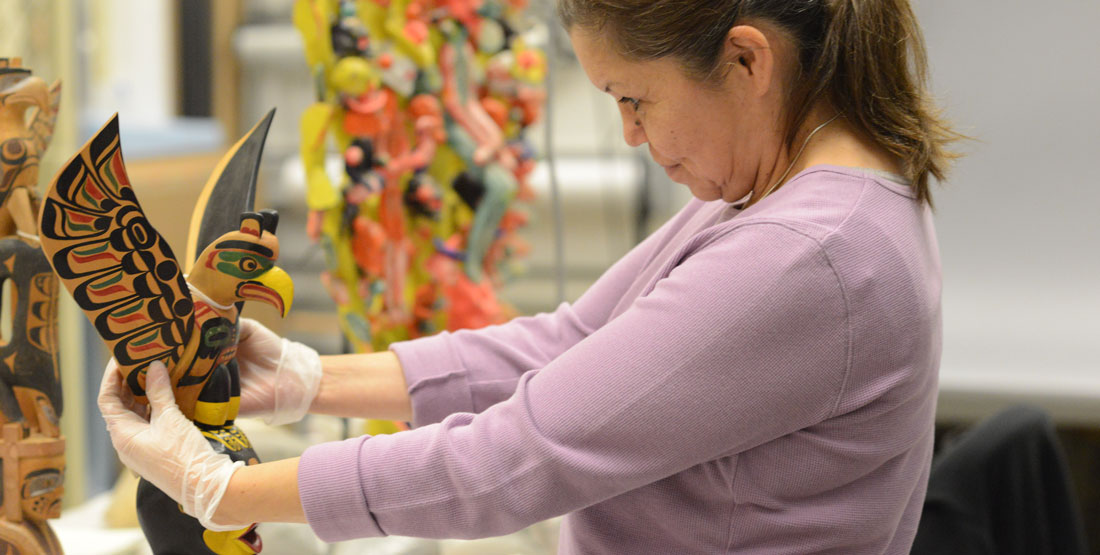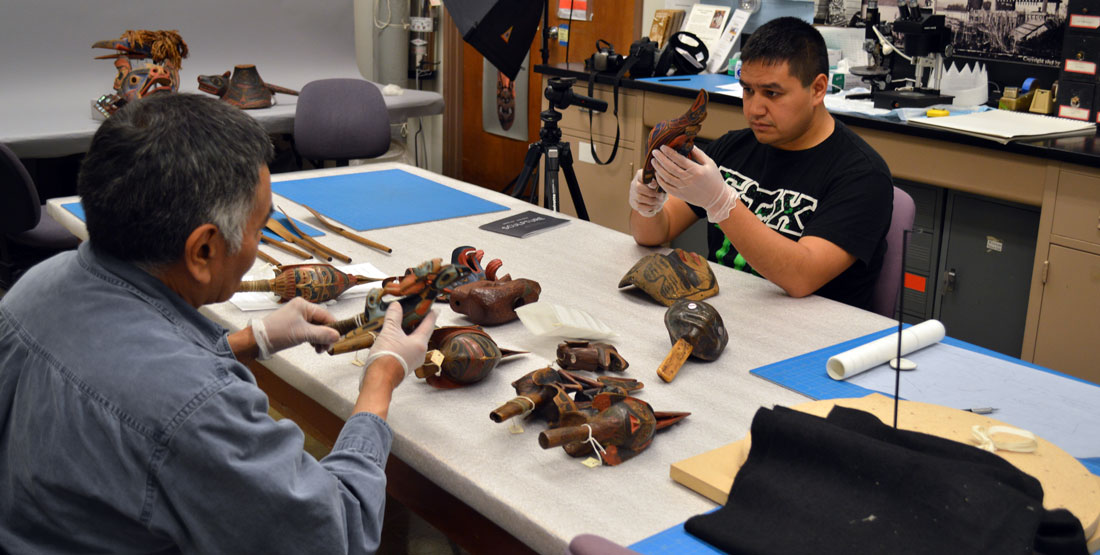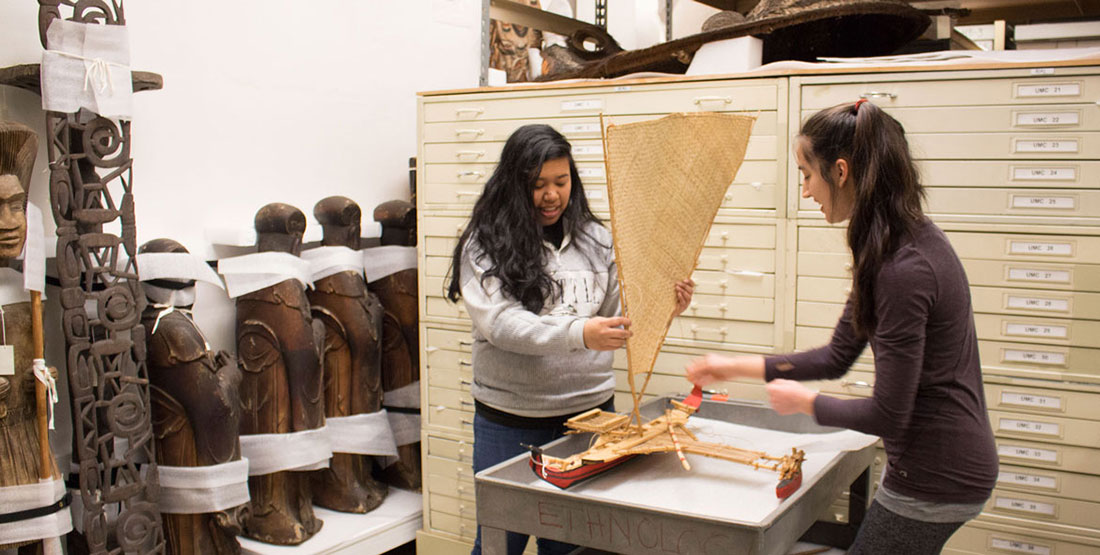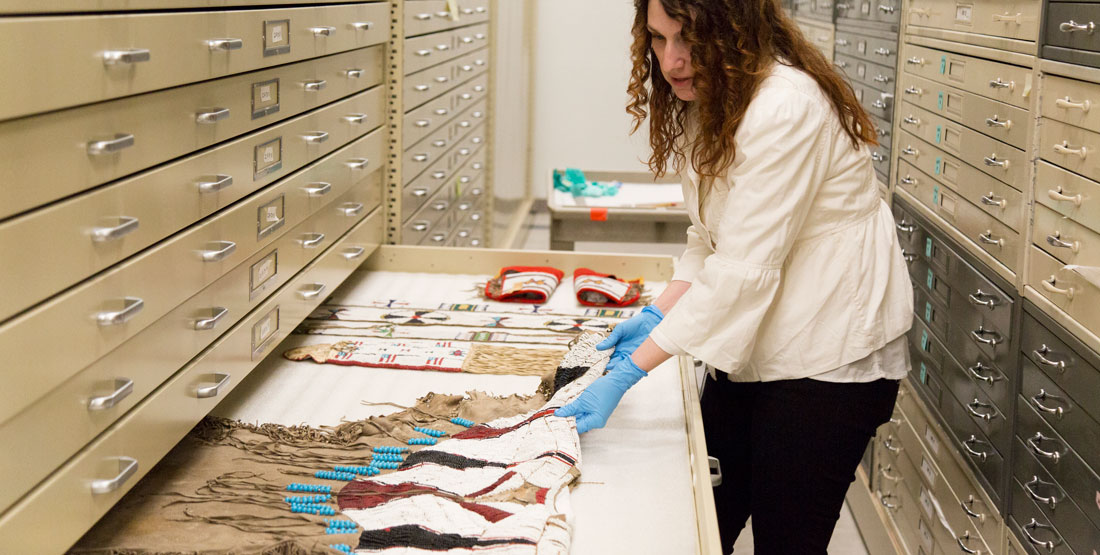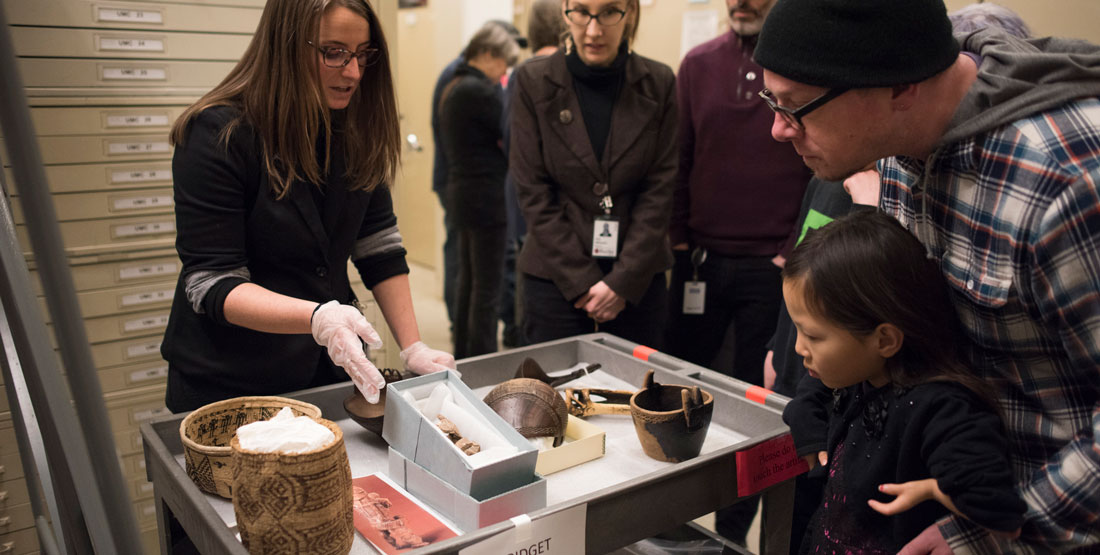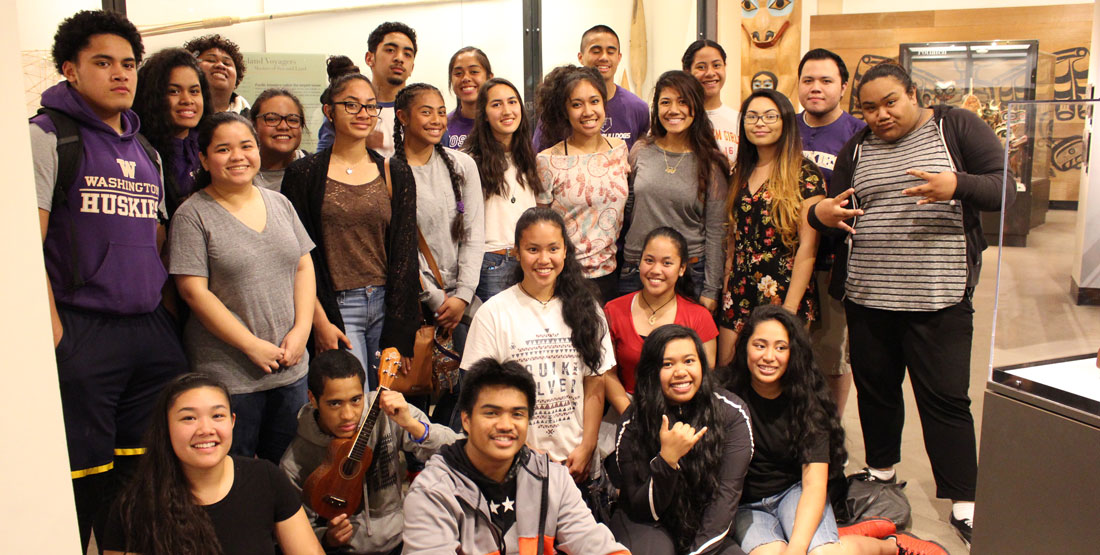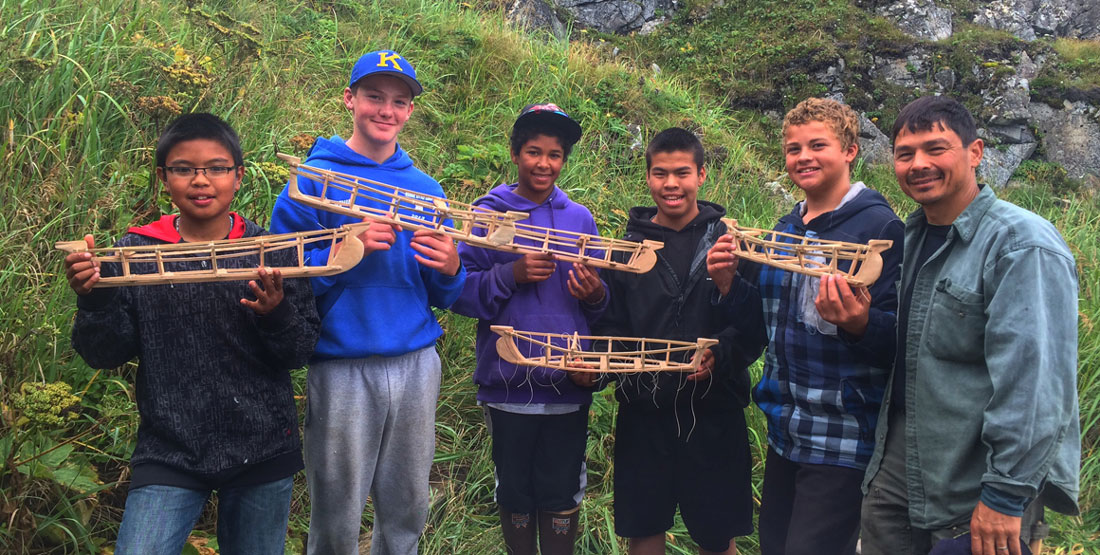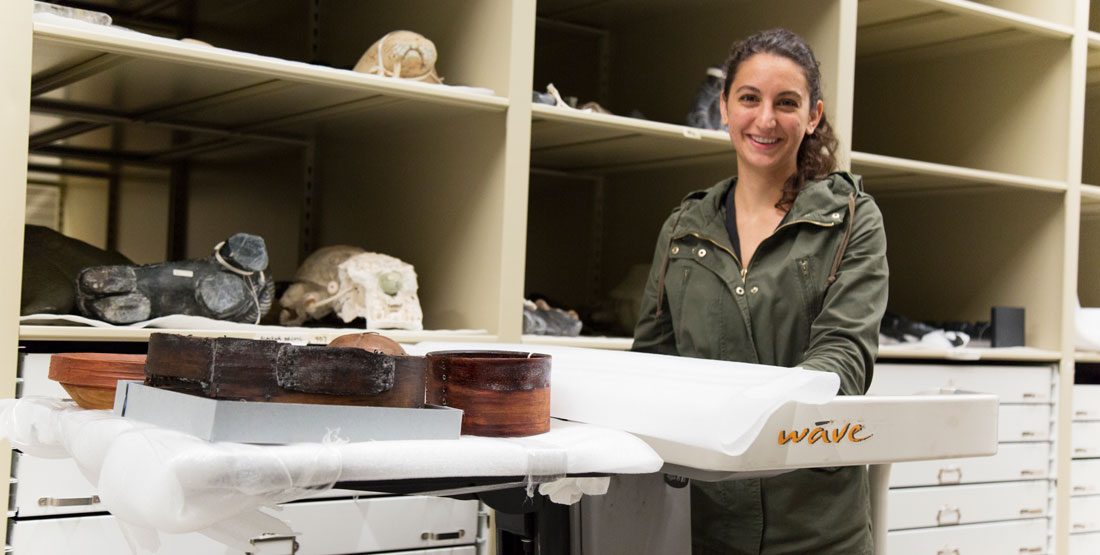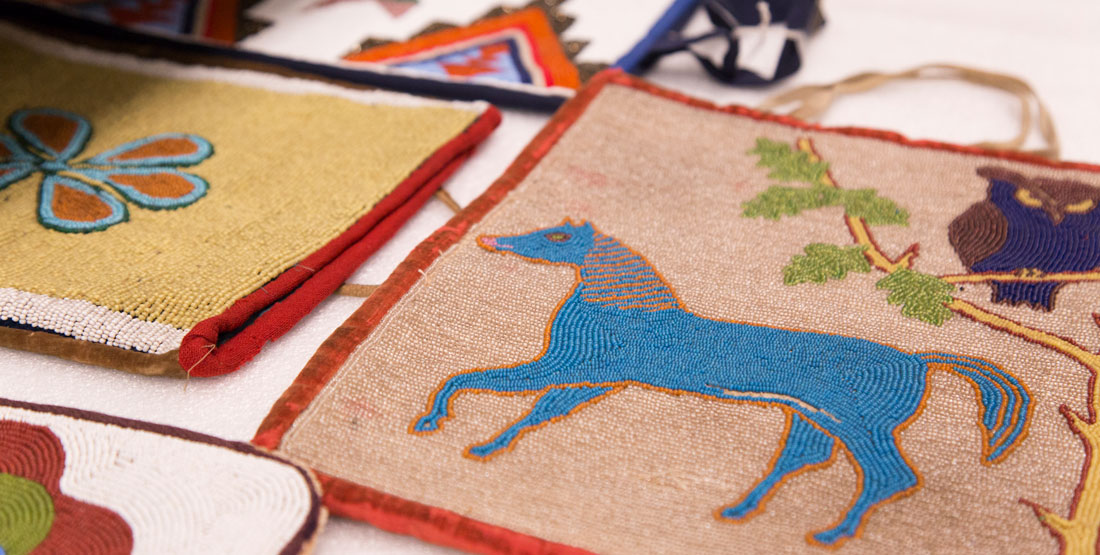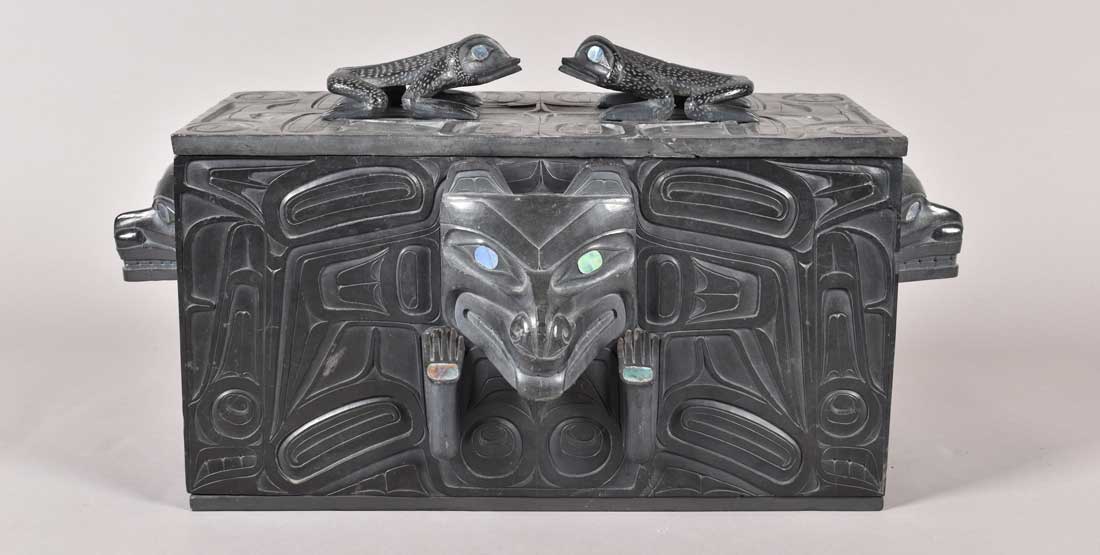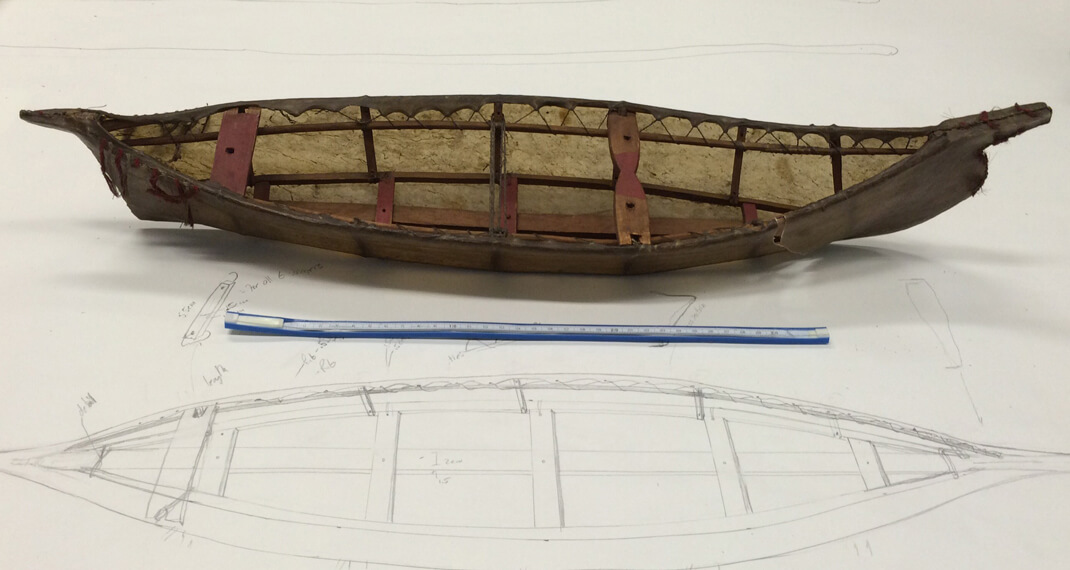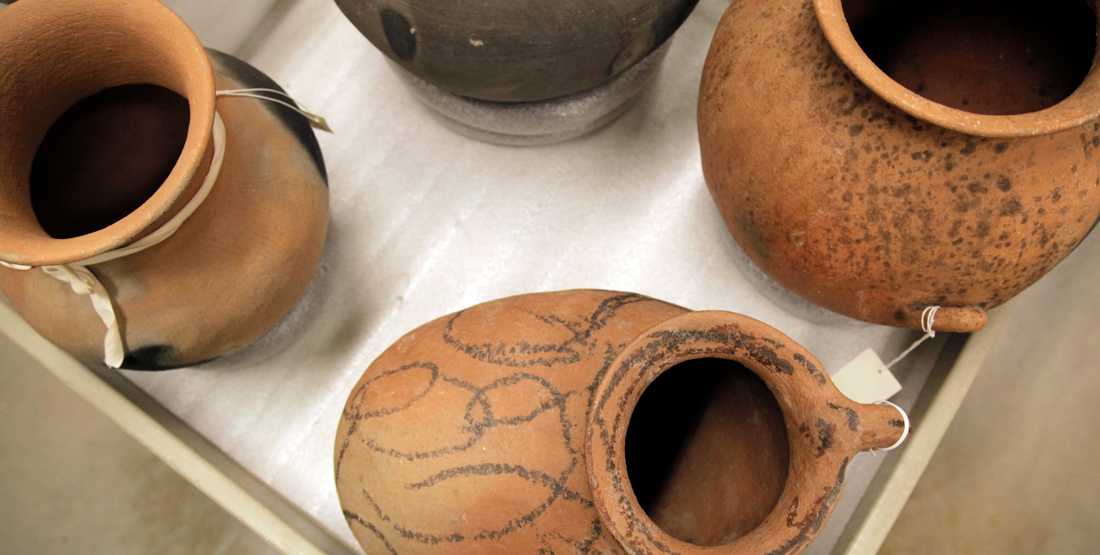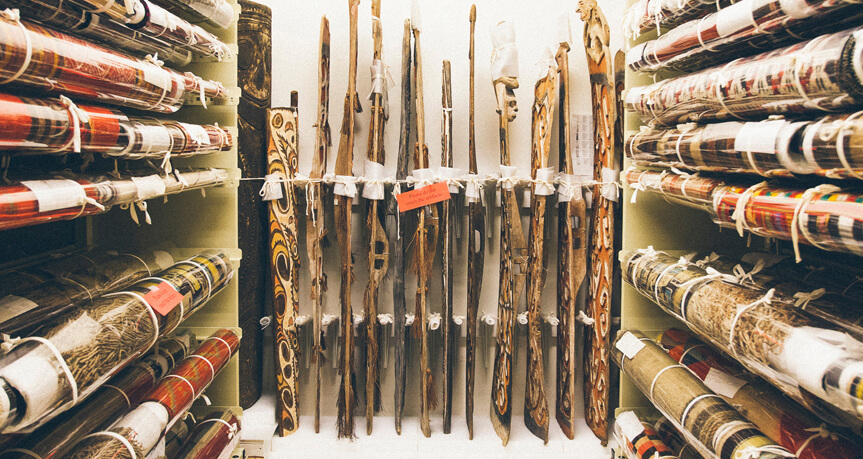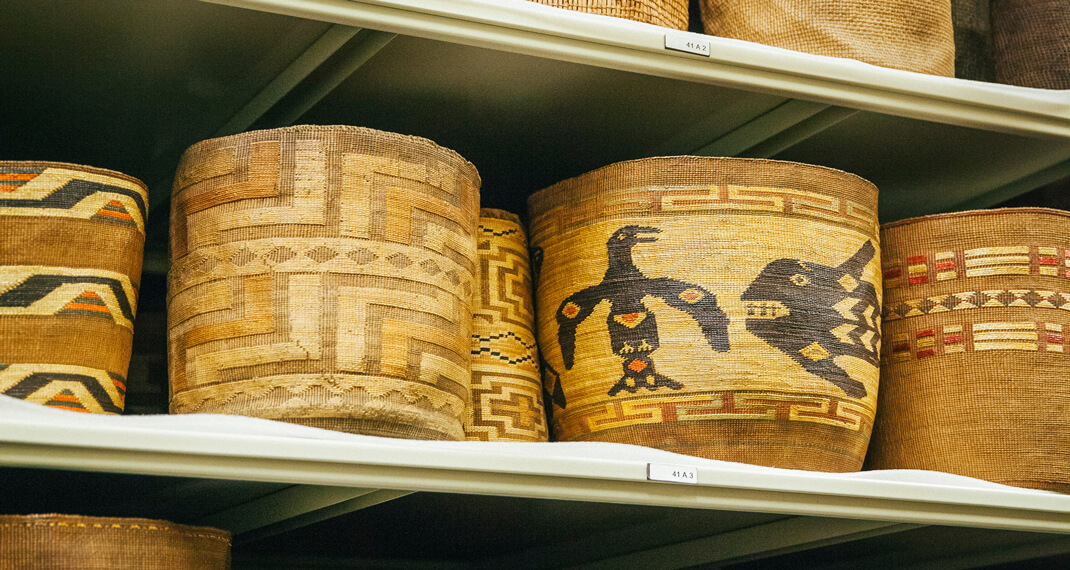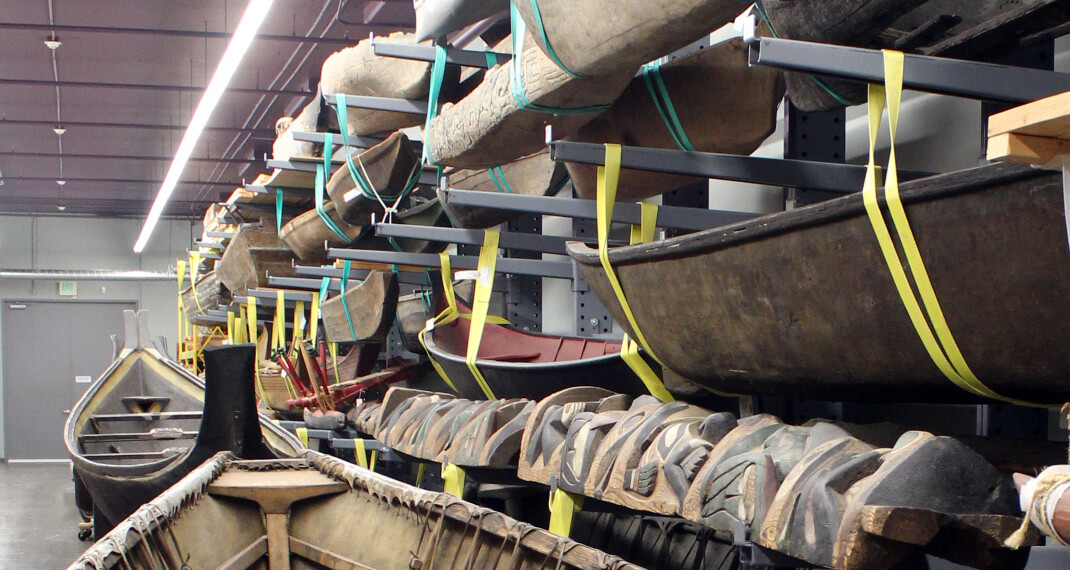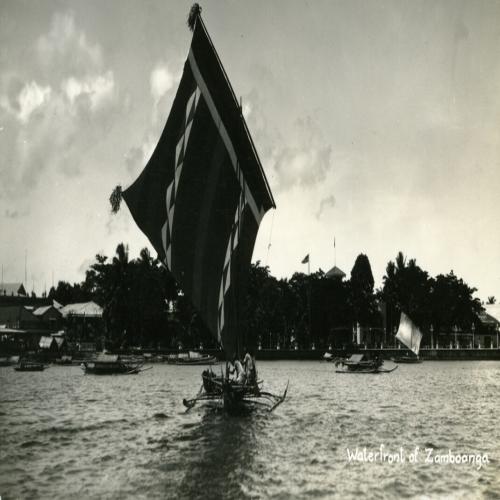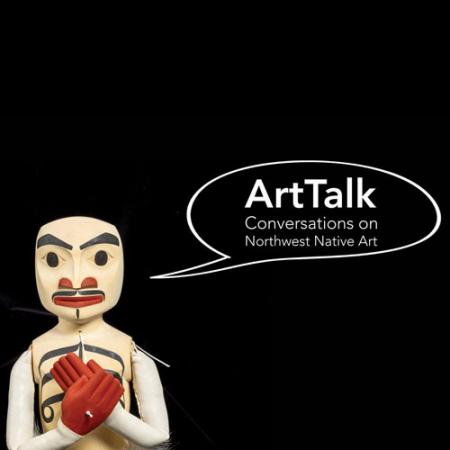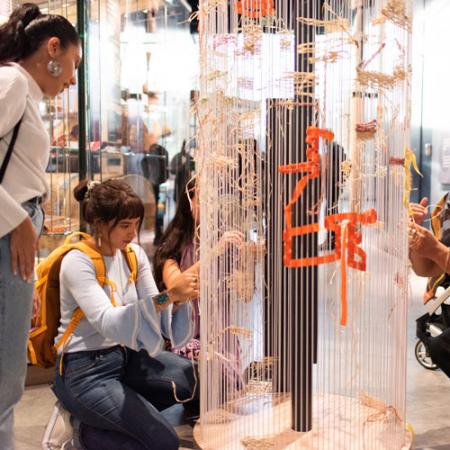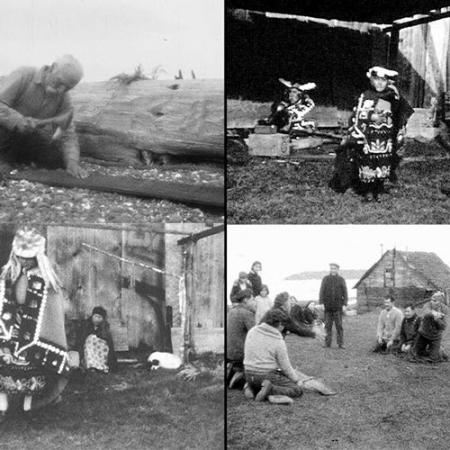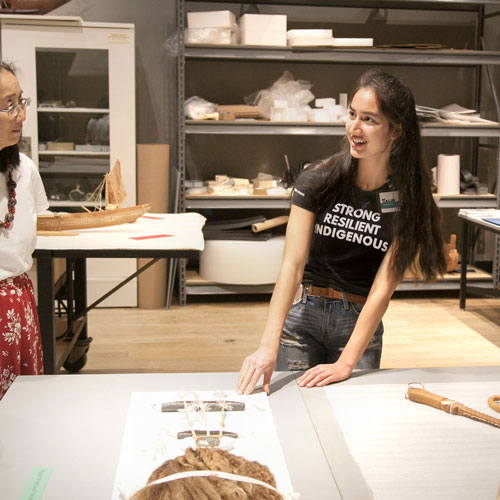
Building a future grounded in respect
Relationships maintained between communities and the Burke Museum preserve the ingenuity, creativity, science, and complex knowledge of these cultural resources. Community members are the experts in these areas, and we are the caretakers.
We are dedicated to actively involving communities in every aspect of our work—learning from communities and building a more ethical and collaborative future together.
Collection Highlights
The collections’ focus is primarily on cultures of the Pacific Region, including particular strengths in Native American art and creations.
The collections include the fifth largest collection of Northwest Coast Native art in the U.S., the largest collection of Palauan storyboards in the world, one of the top-five Alaskan Arctic collections in the world, and the largest collection of utilitarian Mexican pottery in a public museum outside of Mexico.
Pacific Northwest Coast
Alaskan Arctic and Subarctic
Plateau
Oceania
Mexican, Central and South America
Asia
Basketry from around the world
Canoes from around the world
Archival Photograph Collection
University of Washington Courses
Students can also take classes in the Burke Museum Arts & Cultures Collections, engaging in cultural studies, curation, interpretation and independent research.
Questions & Answers
We’ve compiled answers to some of the most common questions we receive. Have another question that you need help with? Contact us.
I’m a researcher. Can I visit the collection?
The Burke Museum actively encourages research in all of the collections. Interested researchers should contact us to obtain information on available collections, the research process and to schedule an appointment to discuss an individual research plan.
All researchers will be required to complete a Research Request Form (PDF) detailing their project and agree to all listed conditions of access. A one-page description of the proposed research must also be submitted along with the form.
Resources:
Can I borrow a belonging for my research?
Requests for borrowing objects for museum exhibits are considered on a case-by-case basis. We cannot lend objects to individuals.
For more information, please refer to our Heritage Collections Loan Policy (PDF) and contact us.
Will you identify my belonging?
Our staff is able to answer questions and provide information on a time-available basis. For more details about identification and how to prepare to have something identified, see the Burke Museum Object Identification Request page.
I’d like to donate something. How do I go about doing that?
We are actively growing both our object and archival collections. If you wish to make a donation, please contact us.
Does the Burke repatriate collections?
Yes, the Burke Museum works closely with tribes throughout the U.S., meeting the letter and spirit of the Native American Graves Protection and Repatriation act (NAGPRA). The Burke also works with other communities and countries to repatriate ancestors and sensitive artifacts. Learn more about Burke Museum Repatriation.
Can I get a photo of a belonging?
Please review the information on the Copyright & Images page, which includes relevant forms and additional instructions then contact us to request an image.
Can I become a volunteer?
We couldn’t do what we do without volunteers! Visit our Volunteer page for more information about Burke Museum volunteer opportunities and to view current openings.
Heritage Team
Meet the people within the Burke Museum Heritage team.
Have a question?
Additional Resources
We've compiled several online resources from outside of the Burke Museum that may also be of interest.
Land Acknowledgement
The Burke Museum stands on the lands of the Coast Salish Peoples, whose ancestors have resided here since time immemorial. Many Indigenous peoples thrive in this place — alive and strong.
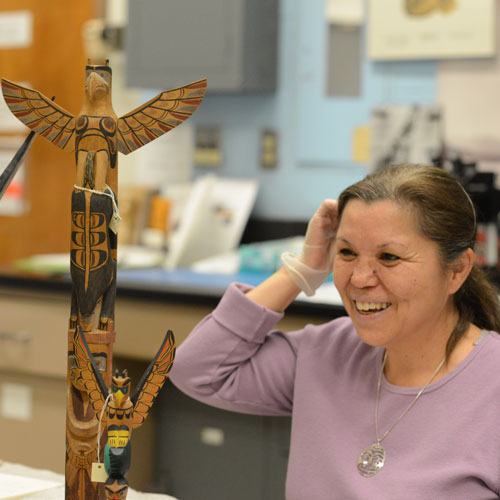
Support Arts & Cultures
Your gift makes it possible! We couldn't do what we do without generous donor support for collections care, research and public outreach.
